#69 - An In-Depth Exploration of a Meat Stick Package
Chomp Chumps; Word Games; Man with Skeleton; Time Machine
Hello, my friends,
The weather in Los Angeles is warming up. Despite the morning fogs, jackets are beginning to get used to staying in closets. I’m especially feeling the heat since I find myself out of the office a lot more than before. Meetings, training, and doing more outreach means that I get to see the sights, but also drive more through the sprawl and crawl of Los Angeles. While I very much enjoy standing behind a table (I rarely sit at events) and telling people about how the library can help them, several hours of active preaching [the library gospel] is exhausting! What I’m saying is that I’m tired. Even when I go to sleep early, it doesn’t seem to be enough these days. Oh, well. At least I’m waking up in a good mood most of the time.
Chomp Chumps

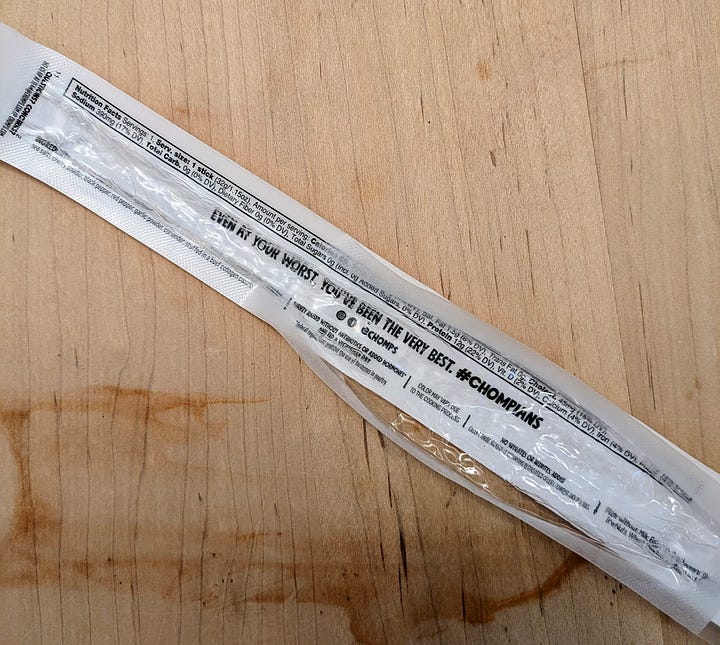
The other day, I ate a turkey jerky stick called Chomp that somehow found its way into our refrigerator ages ago. It was still “fresh” and overall it tasted fine, though I wouldn’t rush to ever have another one. As I…chomped at it, the packaging drew my attention from a marketing perspective. More specifically, I wondered: Who exactly is this product for?
There’s a lot of text on the front and the back of the slim yellow package. To start, there are a bunch of nutritional notes: “Made with antibiotic-free turkey”, “12g protein, 80 calories”, zero sugar. These gave me the sense that it’s competitive advantage over similar products is that it’s healthier. Okay. It also has some diet and other marks of approval: Paleo Foundation, Whole30, GFCO (Gluten-free Certification Organization), and USDA inspected. So more nutritional credibility. Is this processed meat stick supposed to be healthy? They’re sure pushing hard for consumers to believe that. The top of the package says that it’s the “original turkey stick” — cool, they were first to make turkey instead of beef jerky. Doesn’t mean much to me, but maybe someone will be like, “I don’t want any pretenders! I want to the original turkey stick” I can’t imagine who care that much about meat sticks, but someone does. So far, who is this for: Health-conscious trailblazers.
What confused me, though, was the tagline: “All the stick without the ick” It’s catchy, but it seems to assume that meat sticks have “ick”…but not this one. Does ick mean that they taste bad or does it mean that they have unhealthy ingredients? Either way, by throwing shade on the whole category, it sows doubt for me; “But maybe it does have some ick!” Why mention the ick at all? Do the other stick brands mention ick? Either way, Chomps is positioning itself as the meat stick for health-conscious trailblazers who care about taste.
Then we turn the package around. To be honest, mostly more of the same: Nutrition Facts, ingredients, and below that more reasons why dieters should feel comfortable with this product: No nitrates or nitrites added, made without all sorts of stuff (milk, eggs, etc.), again with the antibiotics. And after you eat the thing, you’re greeted with this quote:
“Even at your worst, you’ve been the very best! #Chompions”
Um, what? At my worst? Was I at my worst when I ate Chomps? Does eating this product mean I’ve hit rock bottom? I mean, I want to be a Chompion (who wouldn’t? It’s a great pun), but does it mean I’m actually king of the losers? Is this what they meant about the ick? That despite not having that ick, Chomp is referring to the fact that it’s still random turkey flesh processed into a meat Twizzler.
Then finally, who is it for? I’m guessing trailer trash paleo freaks that find themselves at a convenience store at 3am. Do they want to stray from their diet by stepping into a Slim Jim? No need for that ick, they can rescue the night by becoming…Chompions!
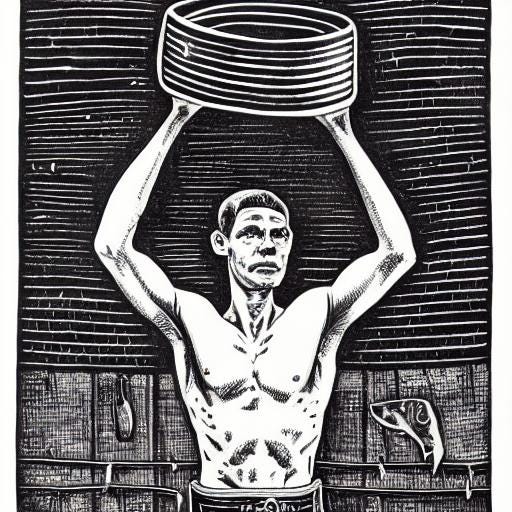
Word Games
Friend of HMF, Ellen, sent me the following email yesterday:
My seven-year-old granddaughter asked me why we say the alarm went off when it actually went on?
And when we say we are turning the alarm on, it is not making any sound at all? Discuss…..
In response, I considered making small talk about how odd languages are in the way they represent making doing things (ie no one actually takes a piss so why don’t we say I have to go leave a piss) but then I thought about the question seriously. Why do we talk about alarms this way? Allow me to bend your ear (eyes) with some speculation:
I suspect that it is an issue of mistaken signification, or what is referred to gone awry after years of misuse; when we say alarm, we colloquially mean the thing that gets our attention, the light, bell, or beeper, or the effect itself (blinking, ringing, screech). But in reality, the alarm is the mechanism that that controls the stimulus that gets us going.
So when we “turn the alarm on,” it means we enable the mechanism controlling the ringer to begin working. Sometimes, we say that we “set the alarm” instead, but to be specific, setting the alarm is only telling the mechanism when to do the thing. First, you set it, then you turn it on. Unless you set the trigger to immediately, it will remain on until the correct moment. Then it will go off.
By going off, it means that the mechanism controlling the bell has had its condition met and has been triggered. It’s now back to being “un-set” and therefore off (though, like the paragraph above, this may also need to be two separate actions if, for instance, a watch is set to buzz at the same time every day). This is conflated with what is meant by “silencing” the alarm, which further confuses things because it refers to silencing the effect, not the mechanism itself.
Basically, there’s looseness in how we refer to the states of an alarm because “alarm” is a synecdoche for the various specific parts of the alarm contraption, each of which behaves based on its function.
Probably this is too much information for a 7-year-old, but maybe not? Kids are curious.
Bonus speculation (not for 7-year-olds): Regarding taking and not leaving a #1. My guess is that the turn-of-phrase originated with having or taking a “piss break” in the work or military context.
Man with Skeleton
For those with salad bowls hats (read: If you’ve been here a while), you know that when I peruse art online, I enjoy setting aside idiosyncratic self-portraits. Recently, I was on a virtual art walk and ran across the German artist Lovis Corinth (1858-1925) who has several notable self-portraits. Just wanted to finish things off by sharing them with you:


Herr Corinth has other portraits, some similarly striking. Worth a look if you enjoy that sort of thing.
Time Machine
Here’s what I wrote in HMF a year ago (in issue #16):
On Expectations for Fathers: An essay on society’s lopsided standards for mothers and fathers.





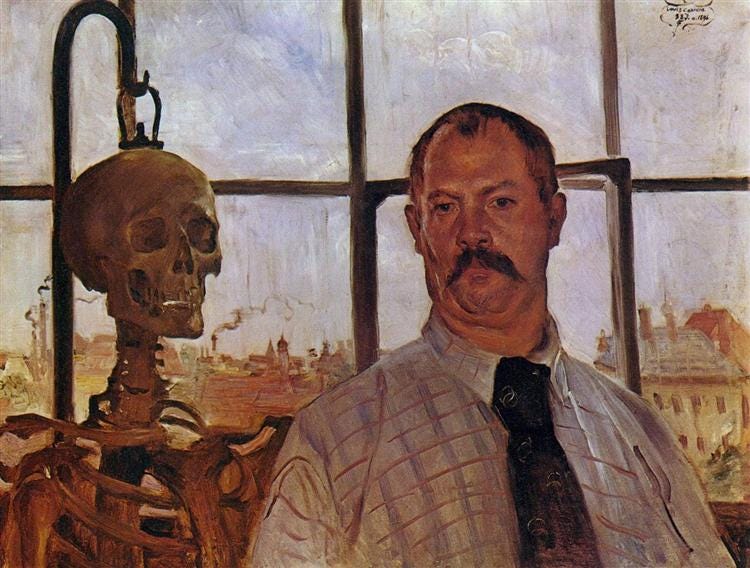

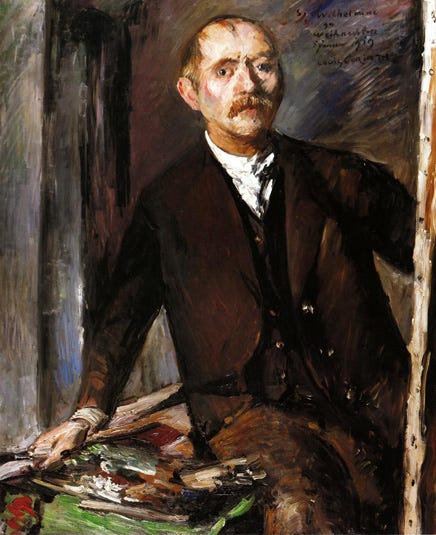
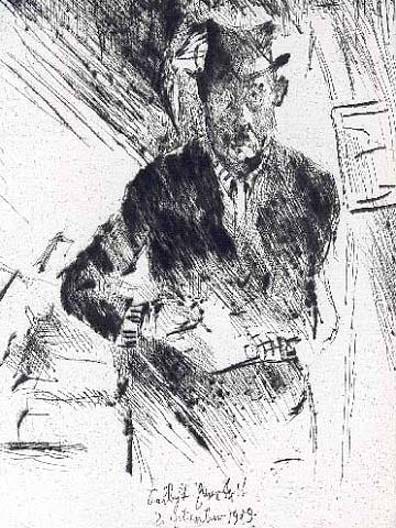
Maybe the ick is condensation? Usually those products look clammy (ugh).
Corinth was doing Cindy Sherman before Cindy Sherman, it seems!